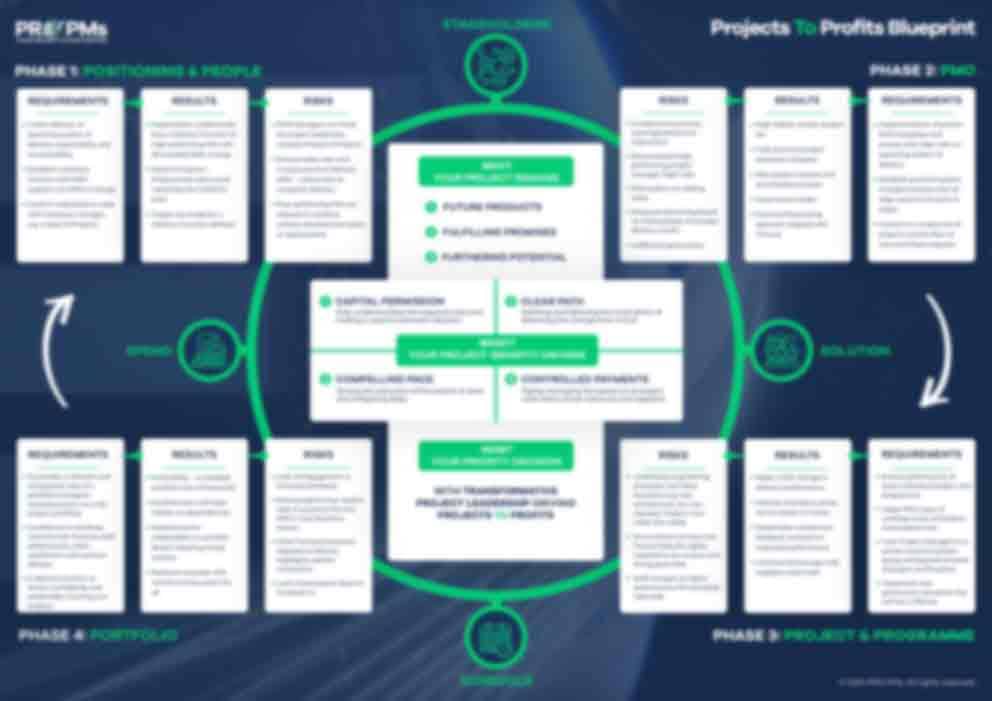In today’s challenging economic climate, where project funding faces unprecedented scrutiny and cuts across various sectors, the traditional approach to project management is proving inadequate. Organizations can no longer afford to treat benefits realisation project management as an afterthought—it must become the foundation upon which every project is built.
The Fatal Flaw in Traditional Project Management
Most organizations approach projects with a fundamental misconception: they believe benefits will naturally emerge once the project deliverables are complete. This backward thinking transforms potentially valuable initiatives into cost centers that struggle to justify their existence.
The reality is stark. When projects are designed primarily around scope completion rather than value-driven project delivery, they often achieve technical success while failing to deliver meaningful business impact. The deliverables are completed on time and within budget, yet the expected benefits remain elusive.
Designing Projects for Value Delivery From Day One
Leading organizations have discovered a transformative approach: they start with benefit design methodology and work backwards to solution design. This represents a fundamental shift in how we conceptualize and execute projects.
Consider a digital transformation initiative. Instead of beginning with technology requirements and hoping for business benefits, successful organizations first define specific, measurable value outcomes. They might target a 25% reduction in customer service response times or a 15% increase in employee productivity. Only then do they design solutions that directly enable these outcomes.
This benefit-focused project planning approach ensures every project decision—from resource allocation to timeline management—optimizes for benefit delivery rather than mere task completion.
The Value Engineering Approach to Project Management
Implementing a project value engineering approach requires organizations to fundamentally rethink their project governance structures. Every project milestone should be evaluated not just for deliverable completion, but for its contribution to the overall value proposition.
This means establishing clear benefit metrics at project inception and tracking them throughout the project lifecycle. It requires project managers to become value advocates, constantly asking: “How does this decision enhance our ability to deliver the intended benefits?”
For example, when facing budget constraints, traditional project management might focus on reducing scope to maintain cost targets. A value-driven approach would instead evaluate which scope elements contribute most to benefit realization and protect those while eliminating activities that don’t directly support value delivery.
Building a Benefits Realisation Framework
A robust benefits realisation framework encompasses several critical components:
- Benefit Identification and Quantification: Clearly defining what success looks like in measurable terms
- Value Stream Mapping: Understanding how project outputs translate into business outcomes
- Benefit Tracking Mechanisms: Establishing systems to monitor progress toward value delivery throughout the project lifecycle
- Accountability Structures: Assigning ownership for benefit realization to specific individuals or teams
- Continuous Optimization: Regular review and adjustment of project approaches based on benefit delivery performance
Transforming Projects Into Value Engines
When organizations master project benefits design process principles, they achieve a remarkable transformation. Projects evolve from necessary expenses into strategic investments with predictable project returns methodology.
This shift is particularly crucial in the current environment where project funding faces increasing scrutiny. Organizations that can demonstrate clear value delivery are more likely to secure continued investment and support for their strategic initiatives.
The key lies in treating benefit requirements project design as seriously as technical requirements. This means involving business stakeholders in defining success criteria, establishing clear measurement frameworks, and maintaining focus on value delivery throughout the project lifecycle.
Practical Implementation Strategies
To implement value-based project management effectively, organizations should consider these practical steps:
- Begin every project with a comprehensive benefits case that quantifies expected value delivery
- Establish benefit owners who are accountable for realizing specific outcomes
- Create regular benefit review checkpoints throughout the project timeline
- Design project governance structures that prioritize value delivery over scope completion
- Develop organizational capabilities in benefit measurement and tracking
The most successful organizations also invest in training their project managers to become value delivery experts, equipped with the skills and tools necessary to optimize project value delivery optimization at every stage.
The Competitive Advantage of Value-Driven Projects
Organizations that consistently achieve project ROI optimization strategy goals create a significant competitive advantage. They build reputation and credibility that makes future project approvals easier to secure. More importantly, they develop organizational capabilities that compound over time, making each subsequent project more likely to succeed.
These organizations understand that in an era of constrained resources and increased accountability, the ability to consistently deliver measurable value through projects becomes a core organizational competency.
The question isn’t whether your organization can afford to adopt a benefits-first approach to project management—it’s whether you can afford not to. In a world where project funding is increasingly competitive and results-focused, only those organizations that master the art of designing projects for value delivery will thrive.
Ready to transform your project management approach? Start by evaluating your current projects through a benefits lens and identifying opportunities to redesign for value delivery. The investment in developing these capabilities today will pay dividends across every future project your organization undertakes.



